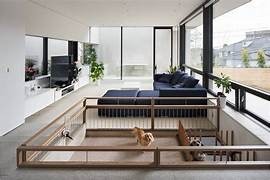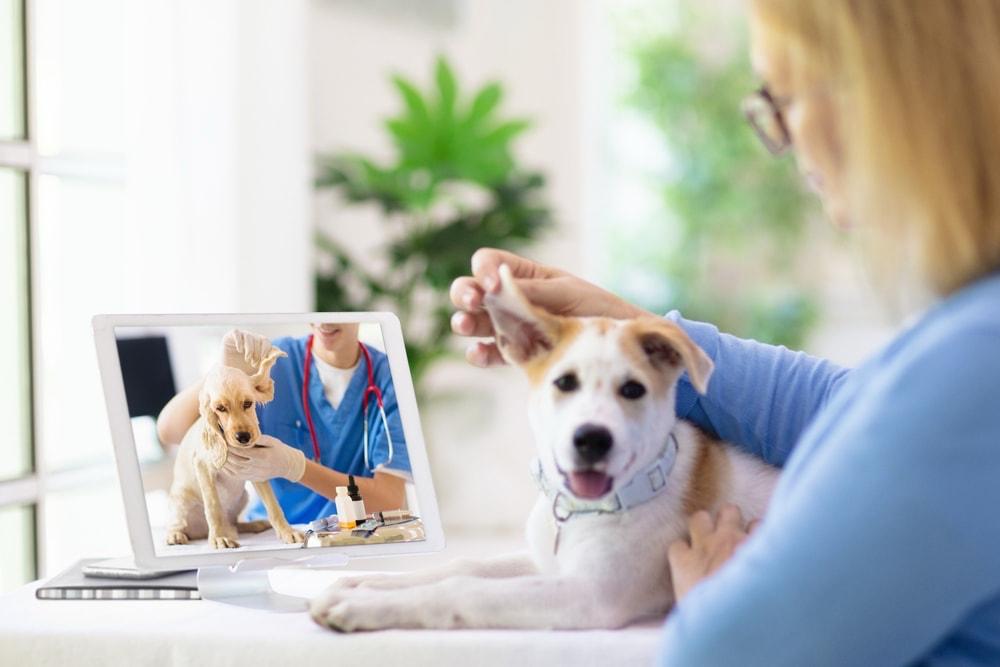
Designing a Pet-Friendly Home in Small Spaces.
“Maximizing comfort, safety, and enrichment for pets in compact living areas through smart furniture choices, vertical space utilization, durable flooring, and creative storage solutions, while ensuring mental and physical stimulation, hygiene, and sustainability, allowing both pets and humans to thrive in small homes without compromising style, organization, or functionality, transforming limited space into a harmonious, pet-friendly environment.”
🐶 Pet Star
52 min read · 17, Oct 2025

Designing a Pet-Friendly Home in Small Spaces
Creating a home that accommodates pets in small spaces can feel challenging, but with thoughtful planning, it is entirely achievable. Whether you live in a studio apartment, a compact city flat, or a cozy townhouse, designing a pet-friendly environment requires a balance between functionality, safety, and aesthetics. Pets bring joy, companionship, and comfort, but they also have needs that must be addressed, especially in smaller living areas. In this article, we will explore practical strategies, smart design ideas, and tips for creating a safe, engaging, and harmonious home for both humans and pets.
Understanding the Challenges of Small Spaces
Small spaces come with unique challenges when it comes to housing pets. Limited square footage means less room for pet furniture, play areas, and storage of pet supplies. Pets may also feel confined, leading to behavioral issues if their physical and mental stimulation needs aren’t met. Furthermore, clutter can quickly accumulate, and odors or damage from scratching, chewing, or shedding may become more noticeable in a compact environment. Understanding these challenges is the first step toward creating a functional and enjoyable home for your furry companions.
Key Challenges Include:
- Limited floor space for pets to move freely.
- Difficulty in designating separate areas for sleeping, eating, and playing.
- Storage constraints for pet supplies, toys, and accessories.
- Increased need for cleanliness and odor control.
- Managing furniture and décor that are pet-resistant without compromising aesthetics.
Planning Your Space for Pet Comfort
The first step in designing a pet-friendly home in a small space is planning. Map out your home’s layout and identify areas that can be multi-functional for both you and your pet. Even in compact apartments, vertical space can be maximized, and corners or underutilized areas can be repurposed for pet comfort.
Essential Planning Tips:
- Define pet zones: Allocate specific areas for sleeping, feeding, and playing. Even a small corner can become a dedicated pet zone with clever furniture placement.
- Multi-functional furniture: Opt for furniture that serves multiple purposes, such as storage ottomans that can hold toys or hide litter boxes.
- Vertical space: Cats especially love vertical territory. Install shelves, cat trees, or wall-mounted climbing systems to give them space to explore without taking up precious floor area.
- Safety first: Remove hazards such as exposed wires, sharp furniture edges, or small items that could be swallowed. Consider baby gates to restrict access to certain areas if needed.
Pet-Friendly Flooring and Surfaces
Flooring is a critical aspect of a pet-friendly home, especially in small spaces where pets spend a lot of time. Pets can scratch, shed, or have accidents, so choosing the right flooring material ensures durability and easy maintenance.
Recommended Flooring Options:
- Vinyl and laminate flooring: These are scratch-resistant, waterproof, and easy to clean, making them ideal for small apartments.
- Tile: Durable and resistant to spills and accidents; however, it can be cold, so add soft rugs or pet beds.
- Hardwood: Offers a stylish look but can scratch easily. Choose harder wood types like oak or use protective coatings.
- Area rugs: Provide comfort and warmth, especially for older pets, but should be washable or easily replaceable.
Furniture and Décor Considerations
In small spaces, furniture choices are crucial. Every piece should serve a purpose while accommodating pets.
Pet-Friendly Furniture Tips:
- Durable upholstery: Choose fabrics like microfiber, leather, or tightly woven textiles that resist scratching and stains.
- Avoid low-hanging drapes: Cats and dogs may pull or chew them. Consider blinds or curtains that are out of reach.
- Multipurpose furniture: Couches with hidden storage can double as toy organizers. Beds with drawers can store pet essentials.
- Pet beds and hideaways: Small spaces require compact yet cozy options. Consider foldable or wall-mounted pet beds that can save floor space.
Maximizing Vertical Space
Vertical space is often underutilized in small homes. Pets, especially cats, love climbing and perching. Utilizing walls and shelves can enrich your pet’s environment without cluttering floors.
Ideas for Vertical Pet Spaces:
- Wall-mounted cat shelves and bridges.
- Multi-level scratching posts.
- Hanging pet hammocks or perches near windows.
- Shelves above furniture for cats to observe and play.
Storage Solutions for Pet Supplies
Small homes often struggle with storage, and pet accessories can quickly create clutter. Smart storage solutions are essential for keeping your home organized.
Practical Storage Ideas:
- Use baskets or bins under furniture for toys, leashes, and grooming tools.
- Install hooks for leashes, collars, and bags.
- Utilize vertical cabinets or shelves for food storage.
- Invest in furniture with built-in storage, such as ottomans or benches.
Mental and Physical Stimulation in Small Spaces
Pets need stimulation to stay happy and healthy. Limited space doesn’t mean limited activity; creative solutions can keep pets engaged.
Ways to Stimulate Pets in Small Areas:
- Interactive toys: Puzzle feeders, treat dispensers, and activity mats keep pets mentally active.
- Window perches: Cats enjoy watching the outside world. Install safe perches to give them a “cat TV.”
- DIY play areas: Small tunnels, cardboard boxes, and climbing platforms can provide enrichment without taking up much space.
- Scheduled outdoor time: Walks or playtime outside are crucial for dogs and can also offer stimulation for indoor cats with supervised patio access.
Feeding Areas and Litter Solutions
Feeding and litter areas are essential considerations in small spaces. Proper placement ensures cleanliness and comfort.
Feeding Tips:
- Use corner spaces or compact feeding stations.
- Elevated feeders for cats or small dogs reduce mess and improve posture.
- Non-slip mats prevent spills and make cleanup easier.
Litter Solutions:
- Consider compact, enclosed litter boxes to reduce odor and mess.
- Self-cleaning litter boxes save space and time.
- Place litter boxes in low-traffic or discreet areas to give pets privacy.
Safety and Health Considerations
Ensuring the safety of pets in small spaces is critical. Small homes can create hazards that are less noticeable in larger areas.
Safety Measures:
- Secure electrical cords to prevent chewing.
- Avoid toxic plants, chemicals, and small ingestible objects.
- Ensure windows have screens or barriers to prevent falls.
- Maintain proper ventilation and air quality.
- Use non-slip rugs to prevent joint injuries for older pets.
Making Small Spaces Cozy and Comfortable
Comfort is as important as functionality. Pets need cozy, safe, and familiar spaces to feel secure.
Tips for Comfort:
- Soft bedding or blankets in designated pet areas.
- Warm corners for cats or small dogs to snuggle.
- Hideaways and tents for shy or anxious pets.
- Consistent scent markers, like toys or bedding, to make the home feel familiar.
Outdoor Integration in Small Homes
Even in small homes, outdoor access can greatly enhance a pet’s quality of life. Small balconies or patios can be adapted safely.
Outdoor Ideas:
- Secure balcony enclosures for cats.
- Small outdoor rugs for dogs to lounge.
- Mini herb gardens with pet-safe plants.
- Regular supervised outdoor sessions for exercise.
Sustainability and Eco-Friendly Options
Small homes benefit from sustainable choices, which can also improve your pet’s health.
Sustainable Options:
- Eco-friendly pet toys made from recycled materials.
- Organic, natural pet bedding and litter.
- Non-toxic cleaning products to keep pets safe.
- Compact, energy-efficient air purifiers for cleaner air in confined spaces.
Designing a pet-friendly home in small spaces requires careful planning, creativity, and a deep understanding of both your living environment and your pets’ physical and emotional needs, as small homes often present unique challenges that larger spaces do not, such as limited floor area, lack of designated zones, and potential clutter from toys, feeding supplies, and bedding, which can quickly accumulate if not thoughtfully organized; therefore, the first step is to map out the space and identify multi-functional areas that can serve dual purposes, such as a corner that accommodates both a feeding station and a cozy bed, or a shelf that doubles as storage for toys while also serving as a climbing platform for cats, as vertical space is often underutilized in compact homes, and pets, especially cats, naturally seek elevated territories for observation and play, which means installing wall-mounted shelves, cat bridges, or even compact, tiered climbing systems can provide them with the stimulation they need without occupying precious floor area, while dogs and other animals benefit from interactive toys, puzzle feeders, and safe areas where they can move, stretch, and rest, all within reach of their human companions, as maintaining accessibility is equally important to ensure pets feel included in daily life; in addition to planning functional zones, the choice of furniture and materials is critical, with durable, pet-resistant options such as microfiber, leather, or tightly woven fabrics that can withstand scratching, chewing, and shedding being essential, and furniture that incorporates storage, like ottomans with hidden compartments, benches with drawers, or beds with built-in space for toys, can prevent clutter while keeping supplies organized, while flooring is another significant consideration, since pets may spill food, shed fur, or have accidents, making materials like vinyl, laminate, or tile preferable due to their scratch resistance, easy maintenance, and durability, although adding washable rugs or soft mats can provide comfort and warmth, especially for older pets, creating a balance between functionality and comfort; safety considerations must also be woven into the design, including securing electrical cords, ensuring that windows have protective screens to prevent falls, removing toxic plants or chemicals, and using non-slip rugs to protect pets’ joints and prevent accidents, while air quality and ventilation are essential in compact spaces where odors and dander can accumulate quickly, meaning that investing in small air purifiers or maintaining regular cleaning routines is crucial, and feeding and litter areas must be strategically placed to maintain hygiene and privacy, with corner feeding stations, elevated bowls, compact or enclosed litter boxes, and mats for easy cleanup ensuring a clean and organized environment; beyond the basics of comfort, safety, and functionality, mental and physical stimulation is critical for pets in small spaces to prevent boredom, stress, and behavioral problems, which can include a variety of enrichment strategies such as interactive toys, tunnels, scratching posts, wall-mounted perches, supervised outdoor access where possible, and scheduled play sessions, all of which contribute to their physical well-being and emotional happiness; small spaces can also be designed with sustainability and eco-friendliness in mind, such as choosing non-toxic cleaning products, organic bedding, recycled or natural toys, and compact, energy-efficient solutions like air purifiers or compact storage units, which not only benefit the environment but also reduce the risk of health issues for both pets and humans; additionally, small homes demand creative problem-solving to ensure that pets have spaces to retreat, hide, or nap undisturbed, as stress-free zones are essential for animals, with options like foldable pet beds, cozy corners, tents, or wall-mounted hideaways offering them security without consuming significant floor space, while windowsills or balcony areas, when properly secured, can provide a safe connection to the outdoors, offering stimulation through sunlight, fresh air, and visual engagement with the surrounding environment; in conclusion, designing a pet-friendly home in a small space is a holistic process that involves not just placing beds, food, and toys, but also optimizing vertical space, choosing durable and multi-functional furniture, implementing safe and clean flooring, planning feeding and litter zones thoughtfully, providing mental and physical enrichment, and maintaining overall cleanliness, comfort, and security, thereby ensuring that pets remain happy, healthy, and engaged while humans enjoy an organized, functional, and aesthetically pleasing home, proving that with careful design and creativity, even the most compact living spaces can become harmonious environments for both people and their beloved pets, blending style, functionality, and animal welfare seamlessly, ultimately demonstrating that limited square footage does not equate to limited possibilities, and that every small home has the potential to provide pets with an enriching, safe, and comfortable environment that meets their physical, emotional, and mental needs while enhancing the overall quality of life for everyone in the household.
Designing a pet-friendly home in small spaces is a unique challenge that requires careful planning, creativity, and a deep understanding of both human and pet needs, as the limited square footage of apartments, studios, or compact houses often creates constraints that make it difficult to provide pets with ample room to move, play, eat, rest, and explore, while also maintaining a comfortable and functional living space for the humans who share it, and achieving this balance demands a multi-layered approach that begins with mapping out the available space and identifying areas that can serve dual purposes, such as a corner that accommodates both a feeding station and a cozy bed, or a shelf that doubles as storage for toys while providing climbing opportunities for cats, since vertical space is often underutilized yet essential in small homes, especially for animals that enjoy observing their environment from higher vantage points, as cats in particular naturally seek elevated spaces for play, exploration, and a sense of security, and incorporating wall-mounted shelves, tiered climbing systems, hanging perches, or multi-level cat trees can effectively satisfy these needs without consuming floor area, while for dogs and other pets, interactive toys, treat-dispensing puzzles, and compact play mats can provide both mental and physical stimulation within limited space, ensuring they remain active, engaged, and healthy even when outdoor exercise is limited due to urban living constraints, and beyond play, the selection of furniture and materials plays a crucial role in designing a small, pet-friendly home, as durable, pet-resistant fabrics such as tightly woven microfiber, leather, or high-quality synthetics can withstand scratching, shedding, and occasional accidents while maintaining aesthetic appeal, and furniture that incorporates storage, like ottomans with hidden compartments, benches with drawers, or beds with built-in sections for toys, food, and grooming supplies, not only minimizes clutter but also ensures that essential items are easily accessible without occupying valuable floor space, while flooring must be carefully considered because pets can spill water, shed fur, or have minor accidents, and therefore options like vinyl, laminate, or tile are preferable for their scratch resistance, ease of cleaning, and durability, complemented by washable area rugs or mats to provide warmth and comfort for pets, particularly older animals who may require softer surfaces for their joints, and safety is a critical aspect that must be integrated seamlessly into the design, including securing electrical cords, installing window screens or barriers to prevent falls, removing toxic plants, chemicals, or small objects that could be ingested, and using non-slip rugs or mats to prevent joint injuries, while maintaining proper ventilation and air quality to minimize odors, dander, and potential respiratory issues in compact homes, which can accumulate more quickly in small spaces than in larger residences, and feeding and litter areas must be strategically placed to maintain hygiene, convenience, and privacy, with corner feeding stations, elevated bowls to reduce mess, compact or enclosed litter boxes, and protective mats ensuring cleanliness, odor control, and ease of maintenance, and in addition to the essentials of safety, hygiene, and comfort, mental and physical stimulation is paramount for pets in small spaces, as insufficient activity or enrichment can lead to boredom, anxiety, and behavioral problems, and this can be addressed through a variety of strategies, such as interactive toys that challenge problem-solving skills, climbing shelves or tunnels that mimic natural exploratory behavior, window perches that provide visual engagement with the outside world, supervised outdoor access where feasible, and structured playtime that not only keeps pets healthy but also strengthens the bond between humans and animals, while also considering the emotional needs of pets by providing cozy, secure areas for rest and retreat, such as foldable pet beds, wall-mounted hideaways, small tents, or soft corners that give them a sense of safety and independence without occupying excessive space, and even small balconies or patios can be adapted to provide safe, enriching outdoor access, with protective enclosures, outdoor rugs, and pet-safe plants offering sunlight, fresh air, and stimulation in urban settings where outdoor space is scarce, while sustainability and eco-friendly design choices can further enhance the living environment, including selecting non-toxic cleaning products, organic or biodegradable bedding, recycled or natural toys, and compact, energy-efficient furniture or storage solutions, which benefit both the environment and the health of pets and humans, creating a holistic approach that integrates functionality, comfort, safety, enrichment, and sustainability into a cohesive design, and ultimately, creating a pet-friendly home in a small space is not merely about placing beds, food bowls, and toys strategically, but about optimizing every inch of the available area to provide pets with opportunities to rest, play, explore, and engage in natural behaviors, while simultaneously maintaining a clean, organized, and visually appealing home that meets human needs, proving that even the most compact living spaces can be transformed into a harmonious environment where both pets and people thrive, blending style, practicality, and animal welfare seamlessly, and demonstrating that limited square footage does not equate to limited possibilities, but rather encourages creative, efficient, and innovative solutions that allow pets to experience comfort, safety, and enrichment, while humans enjoy a functional, aesthetically pleasing, and organized home, ultimately highlighting the potential of small homes to provide an optimal living experience for all members of the household, regardless of size, and emphasizing that with thoughtful design, attention to detail, and a commitment to understanding the needs of pets, every small home can be a sanctuary that fosters happiness, health, and well-being for both pets and their owners, combining functionality, safety, mental stimulation, physical activity, comfort, and eco-conscious practices into a single, cohesive living space that maximizes every inch, and proving that intelligent design and careful planning can overcome the limitations of compact spaces, transforming them into vibrant, safe, and welcoming environments where pets can thrive, humans can enjoy organized, clutter-free living, and the bond between pets and their owners can flourish through thoughtfully created spaces that cater to the unique needs of all inhabitants.
Conclusion
Designing a pet-friendly home in a small space is about smart planning, creativity, and understanding your pet’s needs. By utilizing vertical space, selecting multi-functional furniture, and incorporating compact, safe, and comfortable zones, even the smallest homes can become havens for pets. Thoughtful design ensures that pets are mentally stimulated, physically active, and secure while keeping the home organized, stylish, and functional. With the right strategies, pets and humans can thrive together in harmony, proving that limited space does not mean limited possibilities.
Q&A Section
Q1 :- How can I create enough space for a pet in a small apartment?
Ans:- Use vertical space with shelves, cat trees, or wall-mounted platforms, and select multi-functional furniture like storage ottomans or beds with drawers to maximize usable space.
Q2 :- What type of flooring is best for small pet-friendly homes?
Ans:- Durable, easy-to-clean flooring like vinyl, laminate, or tile is ideal. Add washable area rugs for warmth and comfort.
Q3 :- How can I keep pets mentally stimulated in a small space?
Ans:- Provide interactive toys, puzzle feeders, DIY tunnels, climbing shelves, and supervised outdoor playtime to ensure mental and physical activity.
Q4 :- How do I manage pet feeding and litter areas in a compact home?
Ans:- Use corners or discreet spots for feeding, elevated feeders for dogs or cats, compact enclosed litter boxes, and mats to contain spills.
Q5 :- How can I make small spaces safe for pets?
Ans:- Secure cords, remove toxic plants and small items, install window screens, use non-slip rugs, and ensure proper ventilation to maintain safety and comfort.
Similar Articles
Find more relatable content in similar Articles

Virtual Vet Visits: Are Online Consultations Reliable?..
As pet healthcare embraces dig.. Read More

Social Media for Pets: Turning Your Pet into a Digital..
From playful puppies to charis.. Read More

Composting Pet Waste: A Greener Way to Clean Up...
As pet ownership continues to .. Read More

Pets and Mental Health: The Science Behind Emotional H..
Discover the profound impact o.. Read More
Explore Other Categories
© 2024 Copyrights by rPets. All Rights Reserved.